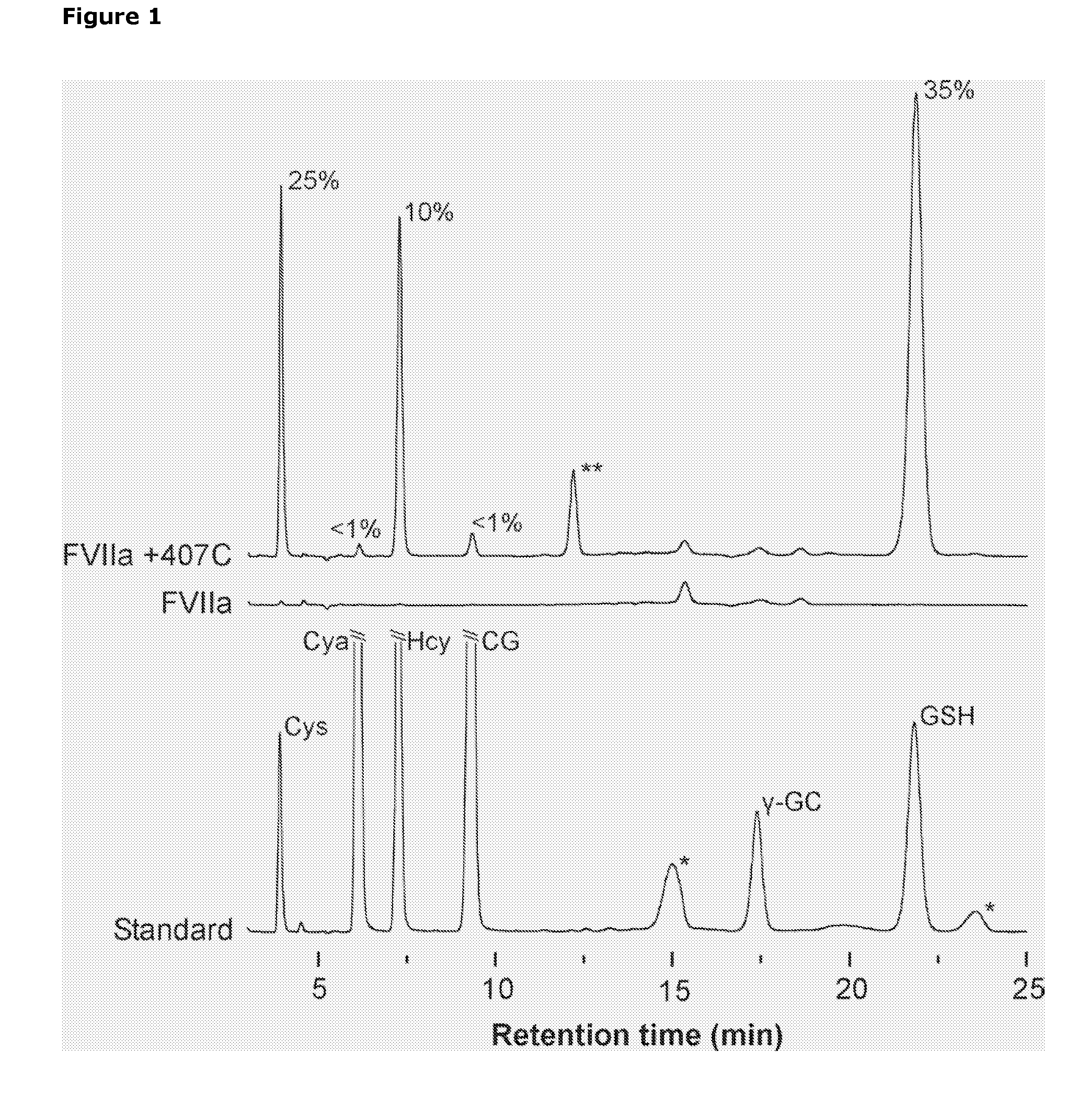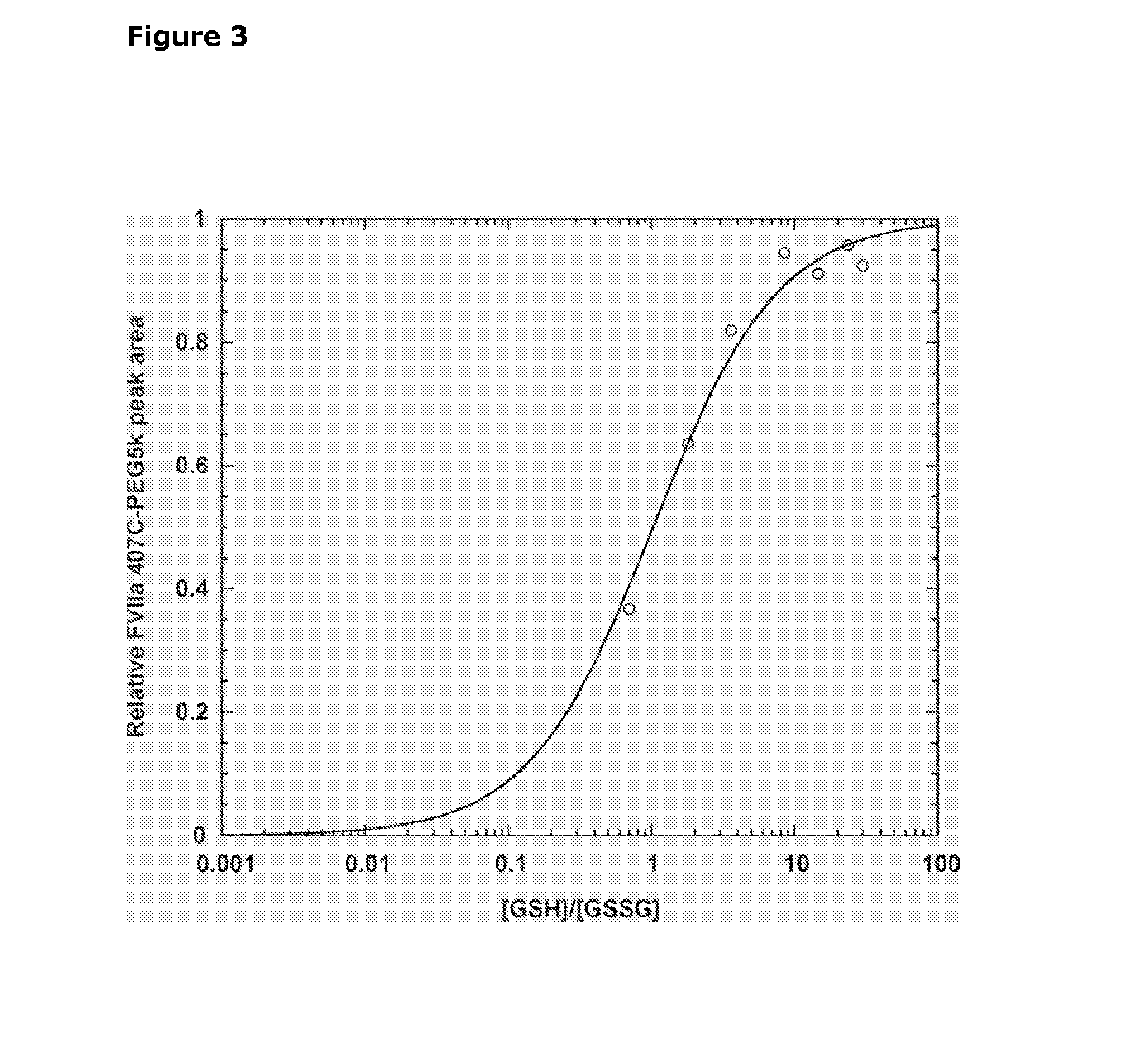Selective Reduction and Derivatization of Engineered Proteins Comprising at Least One Non-Native Cysteine
a technology of engineered proteins and derivatization, which is applied in the direction of peptides/protein ingredients, immunoglobulins, peptides, etc., can solve the problems of inability to achieve a strategy, and achieve the effect of reducing the mixed disulfide bond
- Summary
- Abstract
- Description
- Claims
- Application Information
AI Technical Summary
Benefits of technology
Problems solved by technology
Method used
Image
Examples
embodiment
PREFERRED EMBODIMENT
[0095]In one currently preferred embodiment, the invention relates to a method for selective reduction of a Factor VII polypeptide in its active conformation, said Factor VII polypeptide comprising one or more cysteine moieties conjugated through a disulfide bridge to a low-molecular weight thiol (RS-Cys), said moiety / moieties not being involved in intramolecular S-S bridges (Cys-S-S-Cys) when the Factor VII polypeptide is in its active form, the method comprising the step of allowing the low-molecular weight thiol-conjugated FVII polypeptide to react with a mixture comprising reduced and oxidized glutathione and a glutaredoxin, and the simultaneous and / or subsequent step of conjugating at least one of the selectively reduced cysteine (HS-Cys) moieties with a chemical group each step under non-denaturing conditions.
[0096]In another currently preferred embodiment, the invention relates to a method for selective reduction of a Factor VII polypeptide in its active c...
examples
[0101]FVIIa contains labile intramolecular disulfide bonds as probed by incubation in the presence of DTT—The presence of labile intramolecular disulfide bonds in FVIIa was determined from the loss of catalytic activity after incubation in the presence of 0, 0.5, 1, or 5 mM of the disulfide reducing agent DTT. The reaction was carried out at room temperature in a reaction buffer (50 mM HEPES, 100 mM NaCl, 10 mM CaCl2, 0.01% Tween80, pH 7.0) containing 300 μM FVIIa, and DTT. At timed intervals, 20 μl reaction was transferred to 160 μl reaction buffer containing 10 mM iodoacetamide to rapidly alkylate free thiols and quench the reaction. Subsequently, residual amidolytic activity was measured in polystyrene microtiter plates (Nunc, Denmark) by addition of 20 μl S-2288 chromogenic substrate to a final concentration 1 mM and the absorbance monitored continuously at 405 nm for 10 min in a SpectraMax™ 340 microplate spectrophotometer equipped with SOFTmax PRO software (v2.2; Molecular Dev...
PUM
| Property | Measurement | Unit |
|---|---|---|
| Molar density | aaaaa | aaaaa |
| Molar density | aaaaa | aaaaa |
| Molar density | aaaaa | aaaaa |
Abstract
Description
Claims
Application Information
 Login to View More
Login to View More - R&D
- Intellectual Property
- Life Sciences
- Materials
- Tech Scout
- Unparalleled Data Quality
- Higher Quality Content
- 60% Fewer Hallucinations
Browse by: Latest US Patents, China's latest patents, Technical Efficacy Thesaurus, Application Domain, Technology Topic, Popular Technical Reports.
© 2025 PatSnap. All rights reserved.Legal|Privacy policy|Modern Slavery Act Transparency Statement|Sitemap|About US| Contact US: help@patsnap.com



